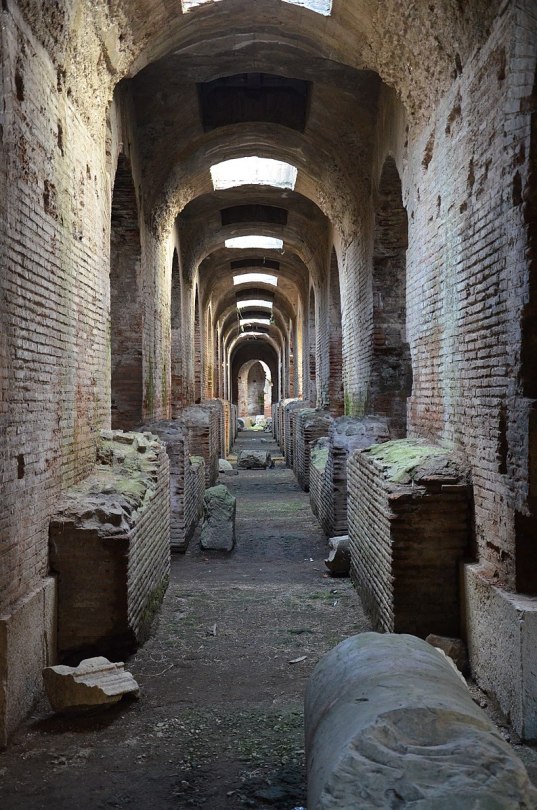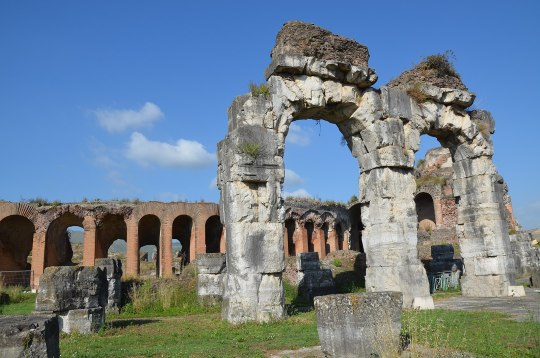The Amphitheatre of Capua was likely built after 31 B.C.E., when Princeps Augustus had established a nearby colony following the Battle of Actium. An inscription that was added to the entrance of the structure reveals also that it had been restored during the reign of Emperor Hadrian and officially dedicated some year later by Emperor Antonius Pius.
The inscription reads as follows:
COLONIA IULIA FELIX AUGUSTA CAPUA FECIT DIVUS HADRIANUS AUG RESTITUIT IMAGINES ET COLUMNAS ADDI CURAVIT IMP CAES T AELIUS HADRIANUS ANTONINUS AUG PIUS DEDICAVIT
In addition to the ancient primary source mentioned above, other sources of the late-second century B.C.E. attest to the presence of nearby gladiatorial schools, which remain famous because they produced the Thracian gladiator, Spartacus: a key player in the Third Servile War (a two-year slave rebellion against the Republic of Rome).
In the past, it has been boasted that both the Amphitheatre of Capua and the Roman Colosseum possessed capacities of 87,000 spectators, although more recently, this estimation has been reduced to a more believable 45,000 – 55,000 for the Colosseum and 34, 000 for the Capuan structure.
The Capuan amphitheatre, like the Roman Colosseum was a four-floored structure: each floor being illustrated by an arcade (a set of arches and columns). The two differed however, in the sense that the Capuan structure relied on solely the Tuscan order of pillars whereas the Colosseum employed different classical orders of architecture for each arcade layer: the Doric, Ionic and Corinthian. Nevertheless, the architectural designs of both structures would have gone a long way to convincing patrons that (unlike the amphitheatre at Fidenae, which collapsed in 27 A. D., killing a great number of people) the Capuan amphitheatre and Roman Colosseum were strong, sturdy and capable of holding 35,000 and 55, 000 people respectively.
Perhaps, like the Colosseum, the majority of the ground-floor arches of Capuan amphitheatre would have been numbered and acted as entrances that corresponded to tickets sold to the general public. Other entrances, likely those suggesting that they had been more lavishly decorated, would have been reserved for more important visitors.
It would appear also that like its descendent in Rome, the Amphitheatre of Capua was also capable of hosting naumachia (naval battles for entertainment) as, according to John Henry Parker, “considerable remains of the canals for them” existed.
References: Richard Burgess, The Topography and Antiquities of Rome, Volume I, London: Longman, Rees, Orme, Brown and Green, 1831, p. 242.
John Henry Parker, The Flavia Amphitheatre: Commonly Called the Colosseum, London: John Murrary, 1876, p. 10.
Katherine E. Welch, The Roman Amphitheatre: From Its Origins to the Colosseum, Cambridge: Cambridge University Press, 2007, p.91.
Images: Image 1, Wikimedia Commons.
Image 2, Aerial photograph © Emma Taricco.
Images 3 – 6, Wikimedia Commons.
Posted by Samantha Hughes-Johnson.






